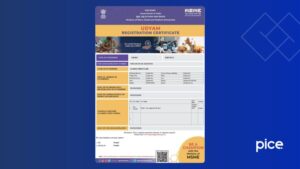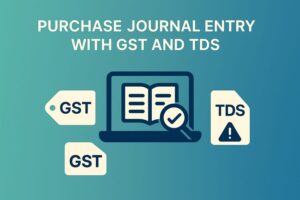GST Constitutional Amendment Bill: Key Articles & Impact
- 17 Oct 25
- 9 mins
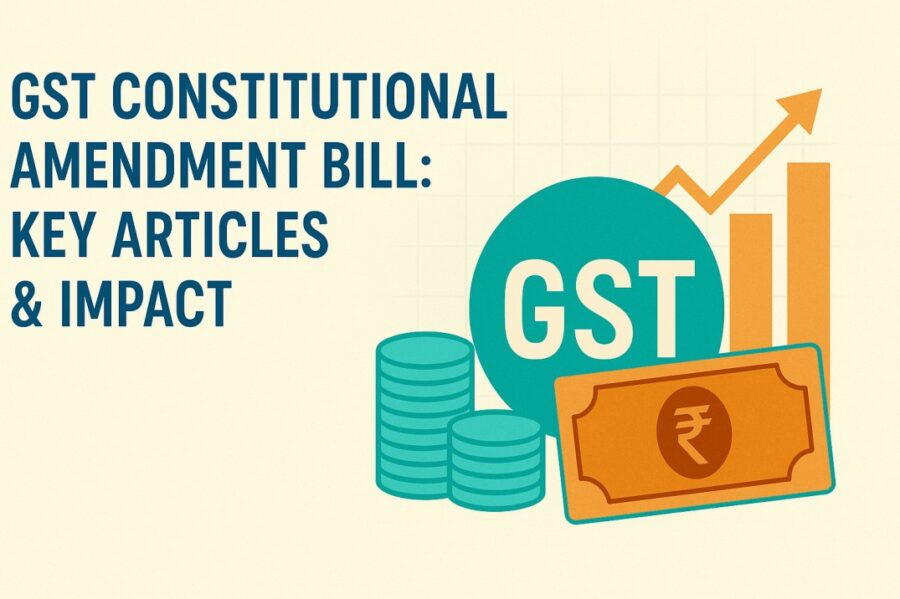
GST Constitutional Amendment Bill: Key Articles & Impact
- List of Most Important Constitutional Provisions Added/Modified in the GST Constitutional Amendment Bill
- Key Amendments in the GST Constitutional Amendment Bill
- List of Some Other Significant Changes in the GST Constitutional Amendment Bill
- Special Features and Safeguards in GST Constitution
- Implementation of GST in India
- Conclusion
Key Takeaways
- The 101st Constitutional Amendment Act of 2016 introduced GST, replacing multiple indirect taxes with a unified national tax system.
- Key articles like 246A, 269A, and 279A redefined taxation powers between the Centre and States, creating a cooperative federal structure.
- The GST Council established under Article 279A governs rate setting, exemptions, and dispute resolution for smooth implementation.
- Amendments such as e-invoicing, Aadhaar authentication, and ITC restrictions strengthen transparency and prevent tax evasion.
- The GST framework simplifies compliance, enhances inter-state trade, and promotes economic unity under the “One Nation, One Tax” principle.
On 1st July 2017, the 101st Constitutional Amendment Act, 2016, came into effect. This marked the introduction of GST (Goods and Services Tax) in India.
The GST Amendment Act plays an important part in ensuring that the implementation of GST is efficient and does not have loopholes. This amendment restructured India’s indirect taxation system and it is now a unified structure for many indirect taxes that prevailed earlier.
This GST Constitutional Amendment Bill helped to reconstruct the taxation powers between the Union and the States and provided equality for all people of India. Further in this blog, we will learn about the constitutional provisions and critical amendments in the GST Act.
List of Most Important Constitutional Provisions Added/Modified in the GST Constitutional Amendment Bill
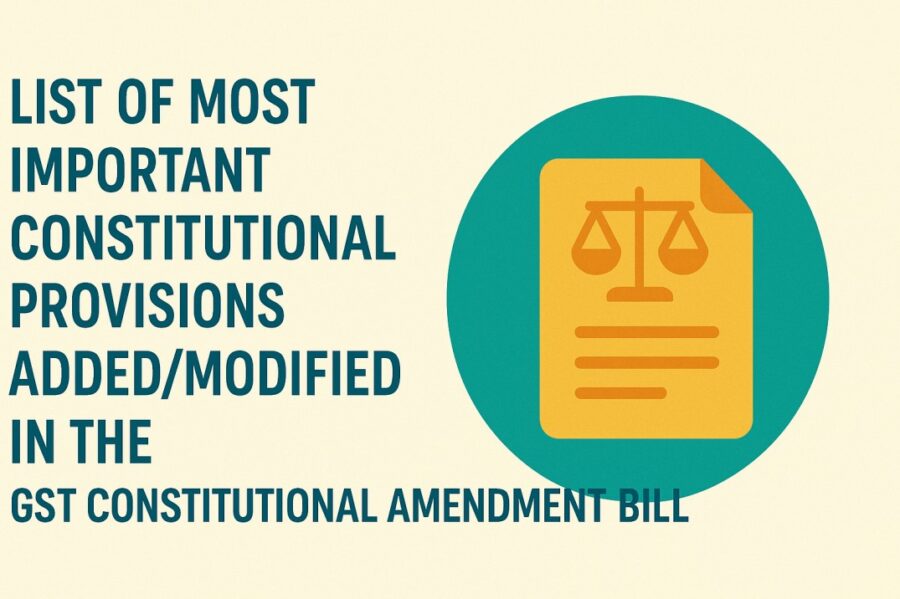
There are many provisions in a constitutional Act. The GST Act also has many provisions that help to maintain the proper execution of taxation in India. Here are some of the most important provisions.
- Article 246A- New Power Structure
This Article provides concurrent powers to the Parliament and state legislature to make laws regarding GST. However, the Parliament holds exclusive power over interstate supplies and business. This article also has a separate clause for petroleum products.
- Article 269A- Taxation of Inter-State Supplies
This article helps to govern the taxation system for interstate supplies of taxable goods and services. The central government levies and collects GST from businesspersons with a GST registration on inter-state trades. According to the Parliament Law, the final tax proceeds are divided between the Union and the State.
Not only outward supplies but inward supplies, like imports, are also deemed as inter-state trade. This article makes it even more precise as it provides power to the authorities to formulate principles for the place of supply.
- Article 279A- GST Council
This article represents the overall rights and responsibilities of the authorities present in the GST Council. This council consists of a chairperson, a Vice Chairperson, other members and state representatives. These people have a responsibility to develop the various laws of GST, such as determining taxable goods and services, developing model GST laws, setting the threshold limit, determining GST rate structure and creating personalised provisions for specified spaces.
However, talking about the voting structure, the Central Government holds ⅓ rd weightage, whereas the State Government holds 2/3rd weightage. Decisions in the Parliament always go in favour of the motion with ¾th or more of the majority.
Key Amendments in the GST Constitutional Amendment Bill
Authoritative individuals in the GST council have been through several meetings to date. In these meetings, they executed many significant amendments to improve the Act and make our taxation system even stronger. Here are some important amendments made to the GST Act.
- Restrictions on Input Tax Credits
According to a new amendment, taxpayers can now claim ITC only on invoices uploaded by their suppliers when they made their ITC.
This helps to ensure the legitimacy of invoices that taxpayers present. This protects the Government from fraudulent activities and strengthens our taxation system.
- Enhanced Composition Scheme
There are some changes in the GST rates and threshold in annual turnover for GST registration, that have made things easier for people of India. Some of these updates impact service providers and people owning a manufacturing and trading business.
Service providers can now opt for a composition scheme at a 6% tax rate, provided they have an annual turnover within ₹50 lakh. The Government of India also raised the threshold for manufacturing and reading businesses from ₹1 crore to ₹1.5 crore.
- E-Invoicing Mandate
The e-invoice mandate requires some businesses to electronically generate and report their finances to the Invoice Registration Policy. This helped to develop automatic and standardised reporting of B2B invoices.
Larger taxpayers with a greater number of transactions can make use of it as it will help them report filings easily and reduce the probability of tax evasion and human errors.
- Exporter’s Revision on Zero-Rated Supplies
In this amendment, the GST Council came to an agreement that exporters can not claim a refund for unutilised ITC unless they physically export those goods.
- Late Fees Rationalisation
The members of the GST council initiated a late fee Rationalisation Amendment. In this amendment, people who delay in filing or do not file GSTR-3B have to pay a penalty. However, it is set to a maximum limit based on a taxpayer’s annual turnover.
- Aadhaar Authentification
This amendment came into action to stop fake registrations and any kind of scams or fraudulent activities taking place. This amendment made it mandatory for taxpayers to go through an Aadhaar verification to get a GST registration.
List of Some Other Significant Changes in the GST Constitutional Amendment Bill
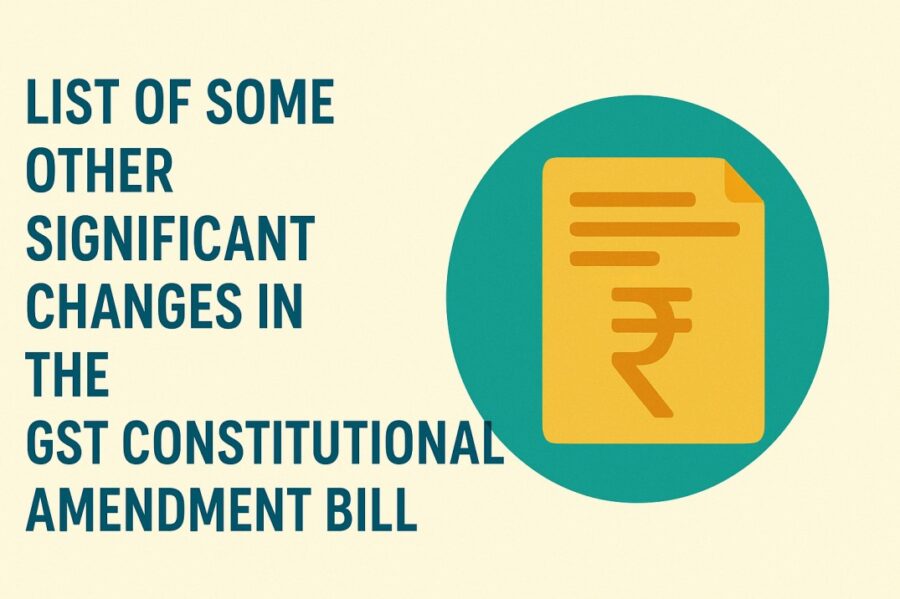
GST came into effect in India in 2017. Since then, there have been numerous updates in the GST constitutional amendment bill that have made it a stronger Act with every amendment. Here are some other significant changes that occurred in the GST Act.
- Restrictions on State Taxation: Article 286 prohibits state taxation on interstate supplies. This article restricts taxation on both inward and outward supplies.
- 5 Years Compensation: This amendment in the Parliament offered a 5-year compensation guarantee to the States. Though the Parliament devises their compensations, it depends on recommendations from members of the GST Council.
- Transitional Provisions: This provision in the GST constitution offered a one-year transition period for existing state laws. It has special provisions for States like Jammu and Kashmir. However, it expires automatically after a year if it is not amended.
Special Features and Safeguards in GST Constitution
There are some special features and safeguards in the GST constitution. Here are some of them:
- Constitutional Safeguards
Changes in the GST Council require 50% state ratification in Article 368. Moreover, it also mandates a Dispute Resolution Mechanism in Article 279A. These decisions in the GST Act help to protect the GST constitution with harmonised tax rates, as our National Market Development guides the Council.
- Exclusions from GST
The GST Act offer exclusions from GST collection on some selective items. It means you do not have to pay GST on transporting or buying these items for consumption. Here are some of them:
- Alcoholic liquor for human consumption
- Entertainment tax, coming from local bodies
- Temporary petroleum products
Implementation of GST in India
The introduction of the GST constitutional amendment bill was a major change in our Indian taxation system. It replaced a number of indirect taxes and became a singular and unified taxation regime. Here are some facts and features that guide you through the frequency of GST implementation in India.
- The President assessed it on 12th April 2017.
- On July 1, 2017, a general implementation of GST took place for the people of India.
- GST came into Jammu and Kashmir on July 8, 2017.
The Parliament also passed a set of Acts that helped in the implementation of GST. These Acts helped in building unity and instilling GST rules and regulations. Here are some of them:
- Integrated GST Act
- Central GST Act
- GST Act for the Union Territory
- GST Act for Compensation to States
Conclusion
The implementation of the 101st Constitutional Amendment Act on 1st July 2017 marked a significant milestone in Indian history. This marked the introduction of GST and helped to develop a unified indirect taxation for all people of India, or outside of India, who make supplies in India.
The GST constitutional amendment bill covers everything that must be there, including administrative structures and tax powers, leaving almost no loose ends.
💡If you want to streamline your payment and make GST payments via credit, debit card or UPI, consider using the PICE App. Explore the PICE App today and take your business to new heights.
FAQs
What is the GST Constitutional Amendment Bill?
What are the key constitutional provisions added by this amendment?
Article 246A grants concurrent taxation powers to Parliament and State Legislatures.
Article 269A governs taxation of inter-state supplies and revenue sharing between Centre and States.
Article 279A establishes the GST Council, the apex body for policymaking under GST.
These provisions form the foundation of India’s GST framework and cooperative fiscal structure.
 By
By 









